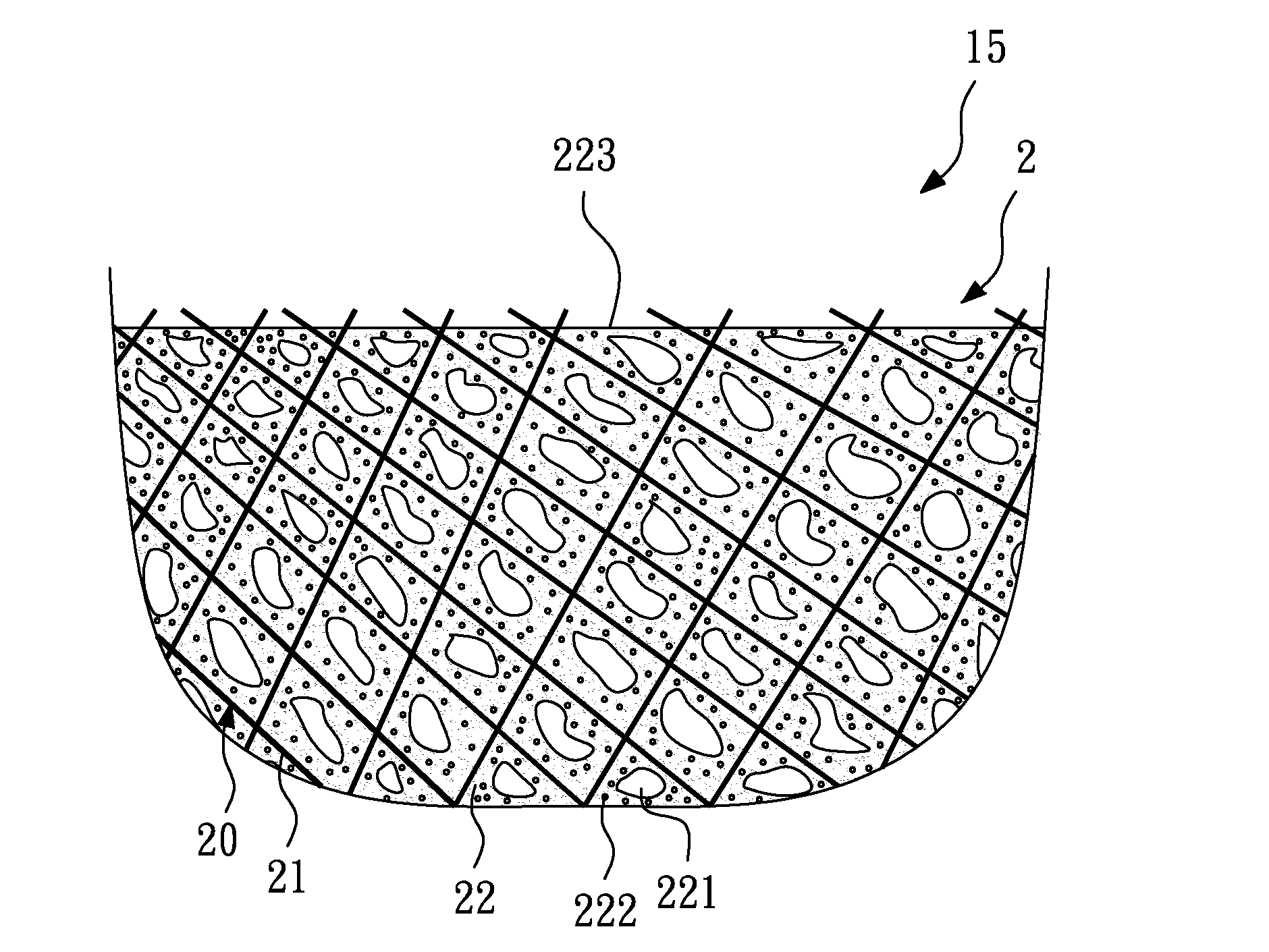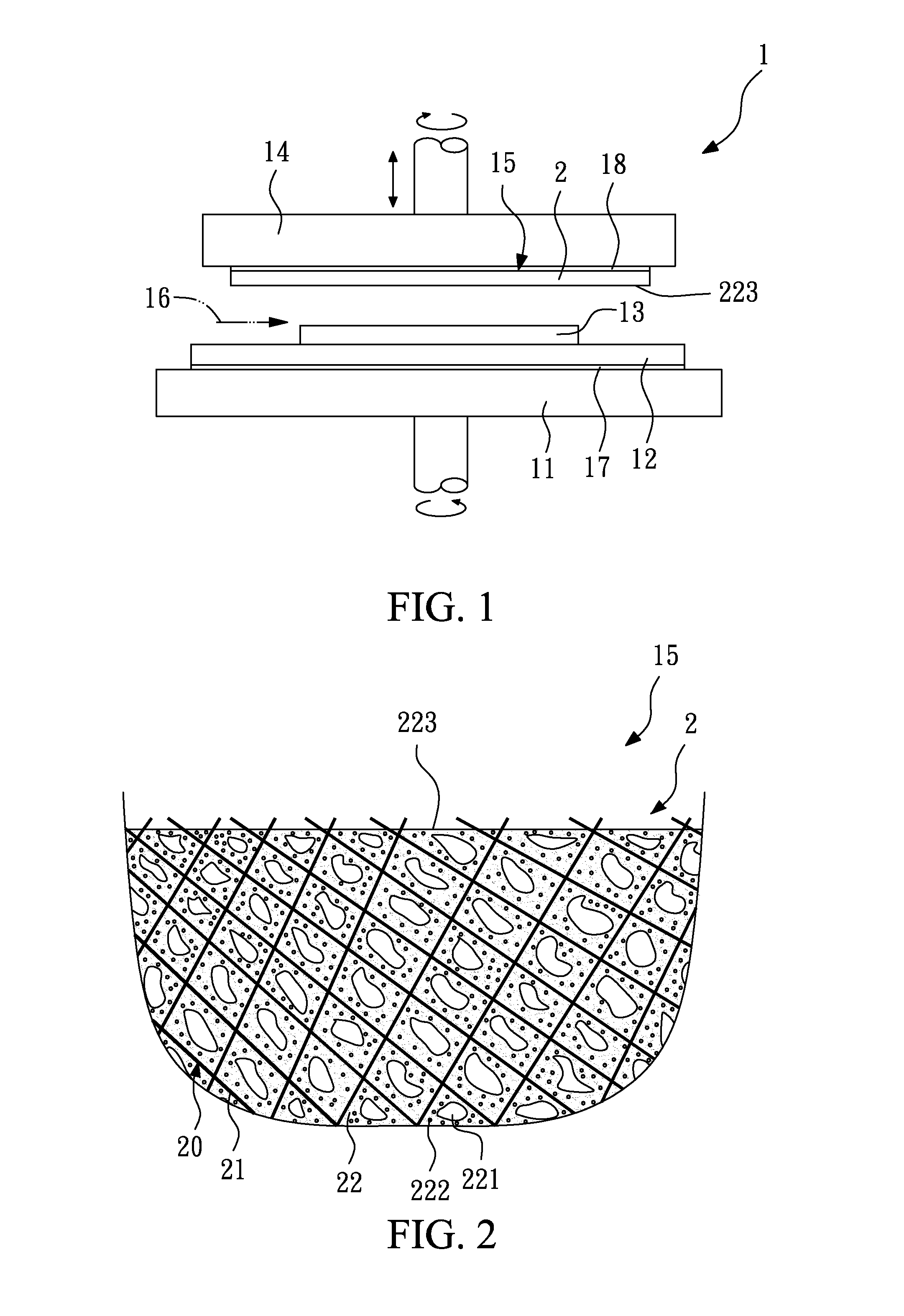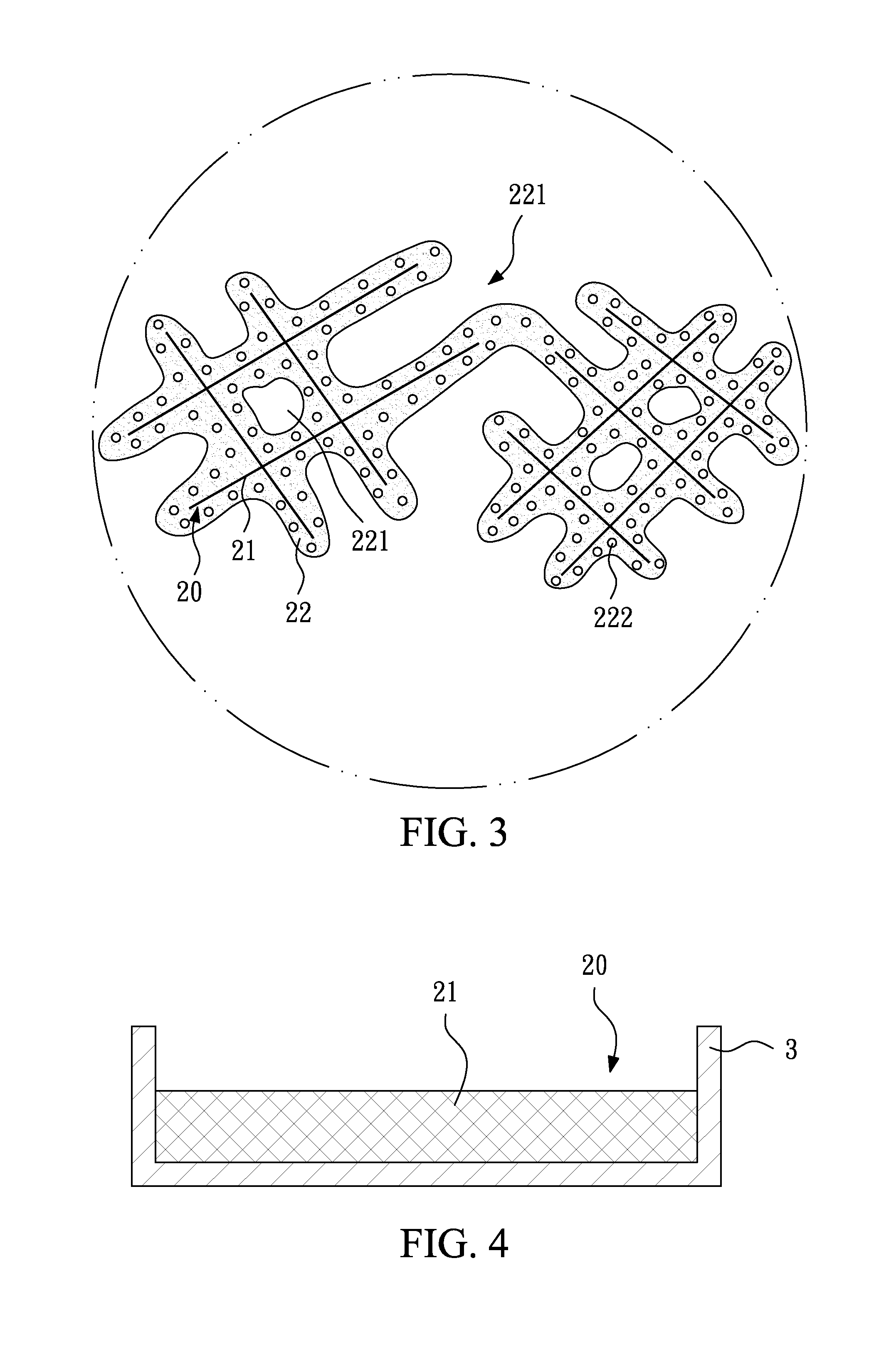Polishing pad and method for making the same
a technology of polishing pad and surface, which is applied in the direction of lapping tool, manufacturing tool, metal-working apparatus, etc., can solve the problems of poor planarization performance of the grinding surface, insufficient overall strength, and short service life, and achieves high planarization efficiency, preferable surface quality, and high planarization efficiency
- Summary
- Abstract
- Description
- Claims
- Application Information
AI Technical Summary
Benefits of technology
Problems solved by technology
Method used
Image
Examples
example 1
[0031]First, a non-woven fiber substrate having a thickness of 5.0 mm is provided, whose weight is 950 g / m2 and density is 0.19 g / cm3. The material of fibers of the non-woven substrate is 100% of PET, and the fineness thereof is 1.50 den.
[0032]Next, the fiber substrate is placed in a mold, and in this embodiment, the length, the width and the depth of the mold are respectively 100 cm, 100 cm and 1 cm.
[0033]Then, diisocyanate (TDI component) with 78.00 wt % and an equivalent number of 200-450 and polyol with 22.00 wt % and an equivalent number of 50-250 are fully mixed to form a foaming resin. In the meantime, the foaming resin is mixed and stirred to form a polymer solution with viscosity of 2250 cps.
[0034]Next, the polymer solution of the foaming resin is injected into the mold to permeate the fiber substrate to enclose the fibers.
[0035]Then, a pre-aging step is performed, in which the foaming resin and the fiber substrate in the mold are directly heated to 70□, which is maintained...
example 2
[0037]First, a non-woven fiber substrate having a thickness of 4.5 mm is provided, whose weight is 675 g / m2 and density is 0.19 g / cm3. The material of fibers of the non-woven substrate is 60% of PET and 40% of Nylon, and the fineness thereof is 3.0 den.
[0038]Next, the fiber substrate is placed in a mold, and in this example, the length, the width and the depth of the mold are respectively 90 cm, 170 cm and 5 cm.
[0039]Then, diisocyanate (TDI component) with 74.20 wt % and an equivalent number of 200-450, a cross-linking hardener with 20.81 wt % and an equivalent number of 50-250 and polyol with 4.99 wt % and an equivalent number of 50-150 are fully mixed to form a foaming resin. In the meantime, the foaming resin is mixed and stirred to form a polymer solution with viscosity of 3600 cps.
[0040]Next, the polymer solution of the foaming resin is injected into the mold to permeate the fiber substrate to enclose the fibers.
[0041]Then, a pre-aging step is performed, in which the foaming re...
example 3
[0043]First, a non-woven fiber substrate having a thickness of 3.0 mm is provided, whose weight is 390 g / m2 and density is 0.13 g / cm3. The material of fibers of the non-woven substrate is 50% of PET and 50% of PP, and the fineness thereof is 2.5 den.
[0044]Next, the fiber substrate is placed in a mold, and in this embodiment, the length, the width and the depth of the mold are respectively 110 cm, 110 cm and 5 cm.
[0045]Then, diisocyanate (TDI component) with 68.90 wt % and an equivalent number of 200-450, aliphatic amine with 28.57 wt % and an equivalent number of 50-250 and polyol with 2.53 wt % and an equivalent number of 50-150 are fully mixed to form a foaming resin. In the meantime, the foaming resin is mixed and stirred to form a polymer solution with viscosity of 4400 cps.
[0046]Next, the polymer solution of the foaming resin is injected into the mold to permeate the fiber substrate to enclose the fibers.
[0047]Then, a pre-aging step is performed, in which the foaming resin and ...
PUM
| Property | Measurement | Unit |
|---|---|---|
| compression ratio | aaaaa | aaaaa |
| density | aaaaa | aaaaa |
| compression ratio | aaaaa | aaaaa |
Abstract
Description
Claims
Application Information
 Login to View More
Login to View More - R&D
- Intellectual Property
- Life Sciences
- Materials
- Tech Scout
- Unparalleled Data Quality
- Higher Quality Content
- 60% Fewer Hallucinations
Browse by: Latest US Patents, China's latest patents, Technical Efficacy Thesaurus, Application Domain, Technology Topic, Popular Technical Reports.
© 2025 PatSnap. All rights reserved.Legal|Privacy policy|Modern Slavery Act Transparency Statement|Sitemap|About US| Contact US: help@patsnap.com



